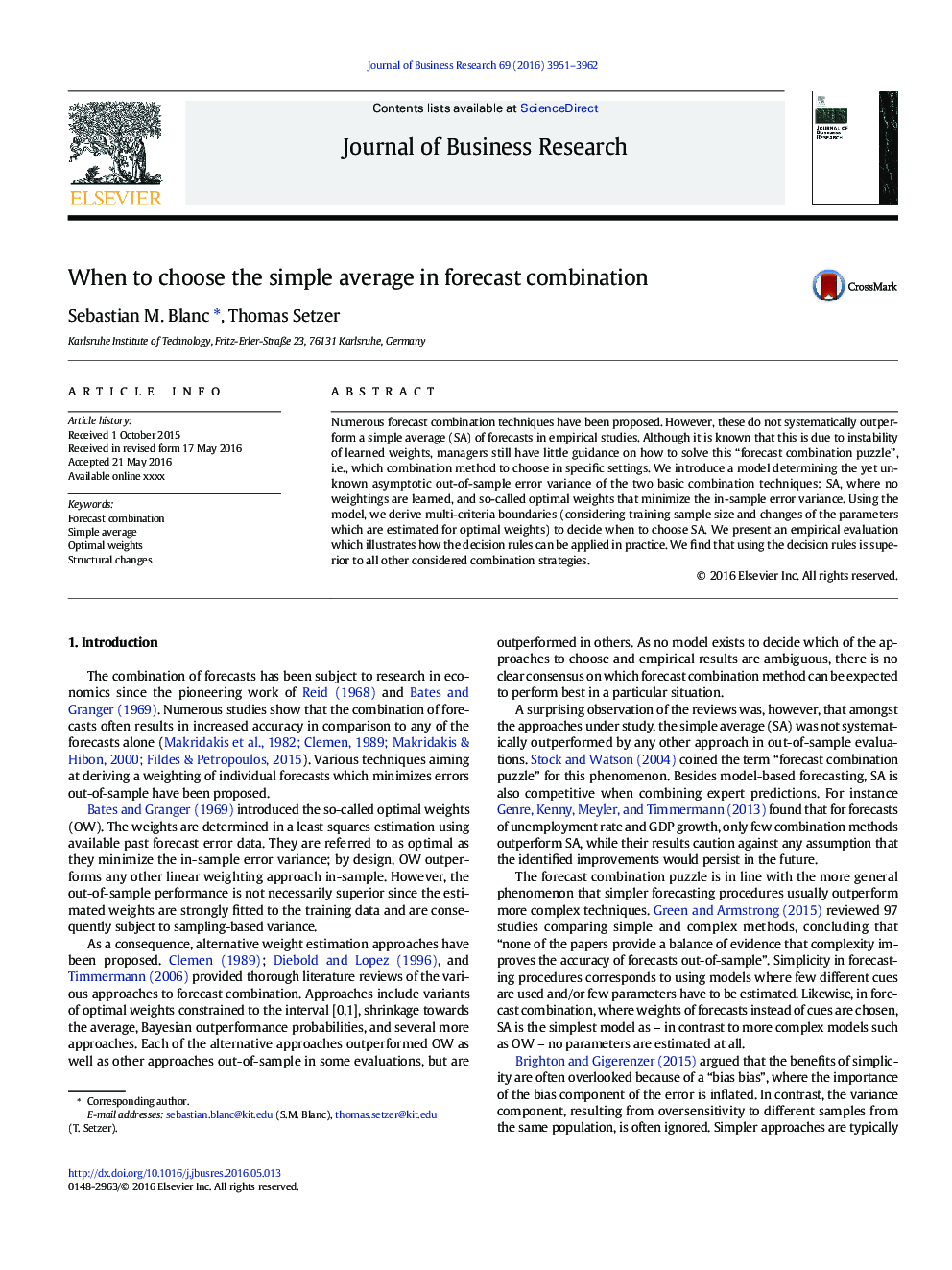| Article ID | Journal | Published Year | Pages | File Type |
|---|---|---|---|---|
| 5109848 | Journal of Business Research | 2016 | 12 Pages |
Abstract
Numerous forecast combination techniques have been proposed. However, these do not systematically outperform a simple average (SA) of forecasts in empirical studies. Although it is known that this is due to instability of learned weights, managers still have little guidance on how to solve this “forecast combination puzzle”, i.e., which combination method to choose in specific settings. We introduce a model determining the yet unknown asymptotic out-of-sample error variance of the two basic combination techniques: SA, where no weightings are learned, and so-called optimal weights that minimize the in-sample error variance. Using the model, we derive multi-criteria boundaries (considering training sample size and changes of the parameters which are estimated for optimal weights) to decide when to choose SA. We present an empirical evaluation which illustrates how the decision rules can be applied in practice. We find that using the decision rules is superior to all other considered combination strategies.
Related Topics
Social Sciences and Humanities
Business, Management and Accounting
Business and International Management
Authors
Sebastian M. Blanc, Thomas Setzer,
